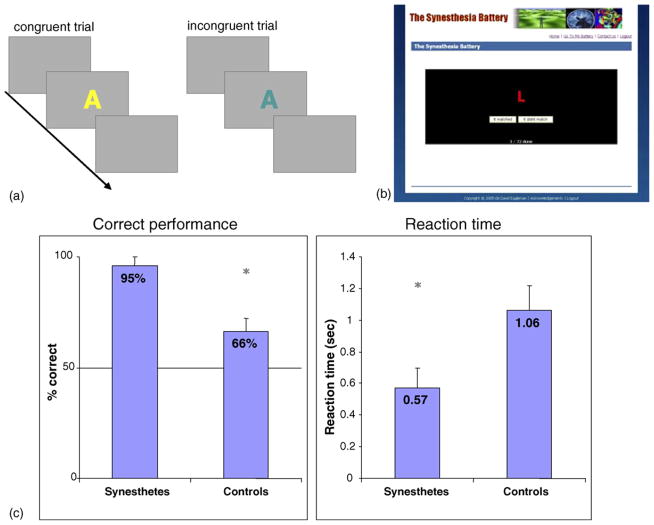Fig. 2.
The speeded congruency test. (a) After taking the consistency test (Fig. 1), participants are presented a series of trials in which a letter appears on the screen for 1 s. The letter’s color is either congruent with the synesthetic color chosen in the previous test, or incongruent. Participants answer as quickly as they can whether the color ‘matched’ or ‘did not match’ their synesthetic perception. (b) Screenshot of the test on http://www.synesthete.org. (c) Synesthetes perform at a much higher accuracy rate than controls (left panel), and do so with faster reaction times (right panel). In combination with the color consistency test, this test provides a clear distinction between synesthetes and controls, and therefore a second level of verification for synesthetic genuineness.

